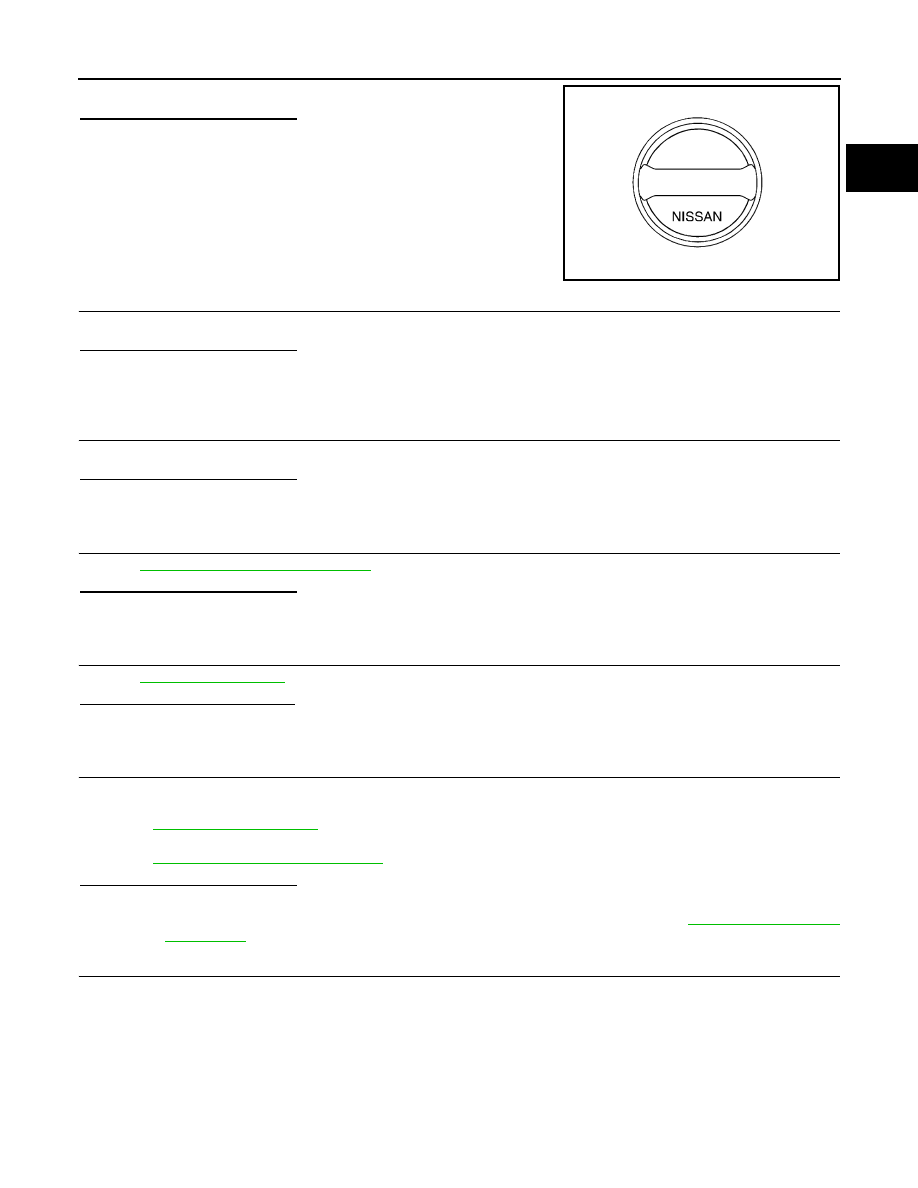Nissan Versa Sedan. Instruction - part 330

P0456 EVAP CONTROL SYSTEM
EC-319
< DTC/CIRCUIT DIAGNOSIS >
[HR16DE]
C
D
E
F
G
H
I
J
K
L
M
A
EC
N
P
O
2. Check for genuine NISSAN fuel filler cap design.
Is the inspection result normal?
YES
>> GO TO 2.
NO
>> Replace with genuine NISSAN fuel filler cap.
2.
CHECK FUEL FILLER CAP INSTALLATION
Check that the cap is tightened properly by rotating the cap clockwise.
Is the inspection result normal?
YES
>> GO TO 3.
NO
>> Open fuel filler cap, then clean cap and fuel filler neck threads using air blower. Then retighten
until reteaching sound is heard.
3.
CHECK FUEL FILLER CAP FUNCTION
Check for air releasing sound while opening the fuel filler cap.
Is the inspection result normal?
YES
>> GO TO 5.
NO
>> GO TO 4.
4.
CHECK FUEL TANK VACUUM RELIEF VALVE
EC-322, "Component Inspection"
Is the inspection result normal?
YES
>> GO TO 5.
NO
>> Replace fuel filler cap with a genuine one.
5.
CHECK FOR EVAP LEAK
.
Is there any leak in EVAP line?
YES
>> Repair or replace.
NO
>> GO TO 6.
6.
CHECK EVAP CANISTER VENT CONTROL VALVE
Check the following.
• EVAP canister vent control valve is installed properly.
• EVAP canister vent control valve.
EC-298, "Component Inspection"
.
Is the inspection result normal?
YES
>> GO TO 7.
NO
>> Repair or replace EVAP canister vent control valve and O-ring. Refer to
7.
CHECK IF EVAP CANISTER SATURATED WITH WATER
SEF915U